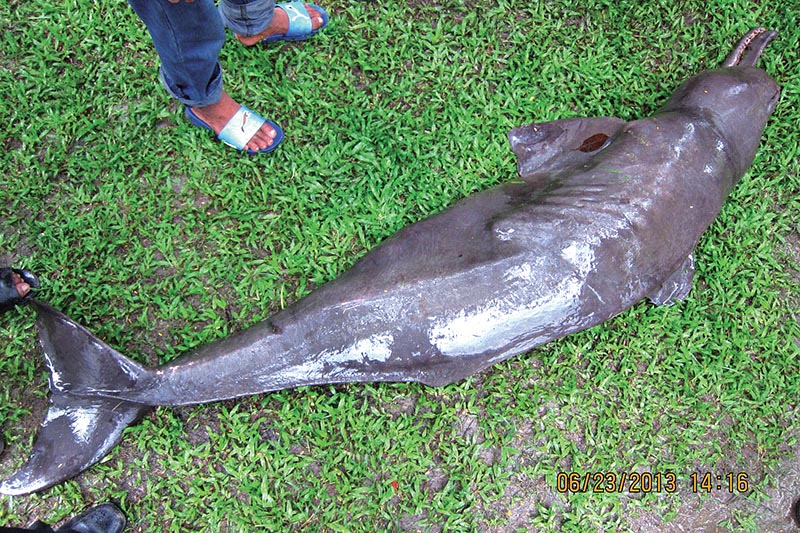Dolphin number down by 66 pc in Karnali River
Kathmandu, Sept 16
The number of dolphins has decreased by 66 per cent in a year in the Karnali River and its tributaries, a recent study showed.
The study was conducted by a team of wildlife experts comprising Mukesh Kumar Chalise, biologist Dhirendra Bahadur Chand, engineer Salin Devkota, secretary at the local dolphin conservation centre Bijaya Raj Shrestha and local team leader Bhoj Raj Dhungana from September 8 to 10 this week.
According to Chalise, the study was centred in the Karnali River and its tributaries the Mohana, Kada and Kadha rivers. He said a total of 22 dolphins were found at the confluence of Karnali and downstream areas whereas no dolphin was found in the tributaries. The team’’s study report last year had shown that a total of 63 dolphins lived in the Karnali River and its tributaries.
“No dolphins have been found this year in those tributaries where we found five to seven dolphins last year. This year, dolphins have been found at Karnali confluence and downstream areas only.” Chalise told The Himalayan Times, “We found decreased water levels due to sand, silt and other debris caused by floods earlier.” He said water levels should be at least two metres deep to enable dolphins to survive in a river. Similarly, a river needs to have a variety of adequate fishes which dolphins feed on. He informed that water levels in the tributaries were extremely low.
The team said the remaining 41 dolphins from last year’s count of 63 could have gone downstream reaching Katarniya Ghat and Indira Gandhi river system in India where water levels remained high.
Although several independent studies were conducted by various organisations in the past, there is no collective data on the dolphin population so far. Data from different years on the number of dolphins in the river system are contradictory.
Last year, a team led by Chalise claimed that the number of dolphins in the Karnali River and its tributaries was 63, whereas the Department of National Park and Wildlife Conservation, the International Union for Conservation of Nature and the National Trust for Nature Conservation put the number at 52 across the country.
In a survey carried out in 2014, a total of 28 Platanista gangetica dolphins were found in the Saptakoshi, Karnali and Narayani rivers. According to World Wildlife Fund, dolphins are some of the world’’s most endangered cetaceans and are at high risk of extinction due to habitat loss and hunting by humans.
The IUCN red-list has included Platanista gangetica as endangered species. According to IUCN, efforts have been made to document the status of Platanista gangetica since the early 1970s, yet rigorous quantitative data on numbers, mortality, extent of occurrence, and area of occupancy are still lacking for much of the species’ range.






